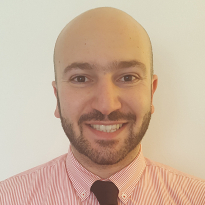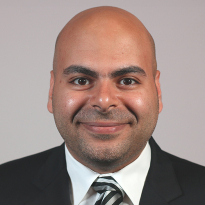 At Children’s Memorial Hermann Hospital, our affiliated interventional radiology team specializes in a range of minimally invasive, image-guided procedures to both diagnose and treat diseases in infants, children and adolescents.
At Children’s Memorial Hermann Hospital, our affiliated interventional radiology team specializes in a range of minimally invasive, image-guided procedures to both diagnose and treat diseases in infants, children and adolescents.
Thanks to advancements in technology, many diseases that once required open surgery can now be addressed with minimal incisions that can lead to reduced discomfort and shorter recovery times. Our approach places a strong emphasis on providing personalized, safe and patient-centered care. Additionally, the team collaborates with specialists from various pediatric departments to develop personalized treatment plans.
The team strives to positively impact the lives of our patients and their families—from leveraging lymphatic interventions for congenital heart disease to employing minimally invasive techniques for treating resistant lung collections, and pioneering innovative approaches to managing bone and solid body organ tumors.
Interventional Radiology vs. Radiology
Interventional radiology (IR) is a specialized branch of radiology. While diagnostic radiology focuses on interpreting various imaging modalities like ultrasound, X-rays, CT scans, and MRIs interventional radiology goes a step further by utilizing imaging techniques not only for interpretation but also for performing minimally invasive procedures.
Advanced Imaging Techniques
IR harnesses cutting-edge imaging technologies such as ultrasound (US), fluoroscopy (low dose X-ray), computed tomography (CT), X-ray and magnetic resonance imaging (MRI) to conduct minimally invasive procedures.
These techniques employ small instruments such as needles, wires and catheters, guided by precise imaging, to address various medical conditions in pediatric patients. Imaging plays a crucial role in directing these instruments to specific areas within the body, including blood vessels, potential body cavities or hollow organs. Additionally, it aids our physicians in targeting lesions for obtaining tissue samples for diagnosis or delivering treatment options.
Procedure Details
One common IR procedure is angioplasty and stent placement, which is used to treat blood clotting secondary to narrowing of the veins. During this procedure, the interventional radiologist inserts a thin, flexible tube called a catheter into the vein, typically in the groin, and guides it to the blocked vein under live X-ray (fluoroscopy) imaging guidance. Once the catheter reaches the blockage, medication is administered to break down the clots. A balloon can also be inflated to reopen the vein. Subsequently, a stent may be placed at the site of narrowing to keep the vein from collapsing and a clot from reforming.
Conditions Treated
The affiliated team at Children’s Memorial Hermann Hospital specializes in treating a wide range of conditions across different organ systems with IR.
Head and Neck:
- Thyroid nodules
- Enlarged lymph nodes of the head and neck.
- Occluded central veins (such as the internal jugular vein)
- Superior Vena Cava syndrome (condition affecting blood flow from the upper body to the heart)
- Abnormal blood vessels in the head and neck
- Malformations in arteries and veins
- Abnormal lymphatic vessels
Lung and Pleura:
- Abnormal blood vessel connections in the lungs (arteriovenous malformation aka AVM).
- Fluid buildup around the lungs (pleural effusions)
- Collapsed lung (pneumothorax)
- Lung infections not responding to usual treatment
- Abnormal connection between airways and pleural space (bronchopulmonary or bronchopleural fistulae)
- Chylous fluid collections around the lung
- Imaging of lymphatic vessels and nodes
Gastrointestinal Disorders:
- Feeding-related procedures (gastrostomy tubes, gastrojejunostomy tube, nasoduodenal tubes)
- Fluid buildup in the abdomen (ascites)
- Abdomen and pelvis abscess collections
- Liver abnormalities
- Biliary system interventions.
- Spleen, gallbladder and adrenal gland abnormalities
- Rectal bleeding treatment
Musculoskeletal System:
- Soft tissue and bone tumors
- Bone cysts
- Joint aspiration and injections (steroid injections)
- Joint bleeding.
- Bone metastasis
Venous System:
- Blood clots in veins (deep venous thrombosis)
- Venous occlusion (chest, abdomen, pelvis or upper and lower extremities) including:
- May-Thurner syndrome
- Paget-Schroetter syndrome
- Venous access in small babies
Arterial System:
- Blocking blood flow to tumors before surgery
- Treatment for liver issues caused by abnormal blood vessels
- Tumor treatment when surgery or other treatments are not possible
- Repair of damaged or blocked arteries
The Advantages of Interventional Radiology
IR procedures are less invasive compared to traditional surgery. The use of imaging eliminates the need for large incisions to visualize the target area. Instead, we can make very small incisions to guide precise instruments into the body for treatment. This approach may lead to shorter procedure times, reduced pain, fewer complications and faster recovery for patients, in addition to creating a smaller post-procedural scar (small needle scar vs larger scar).
About the Team
The affiliated IR team comprises a diverse group of professionals working collaboratively to perform minimally invasive procedures.
The team members who are typically present during an IR procedure include:
- Interventional radiologist: They play a crucial role in IR procedures by interpreting medical imaging studies to guide the intervention. They carefully analyze images obtained from modalities such as ultrasound, X-ray, CT or MRI to identify the target area for treatment, assess the surrounding anatomy, and plan the safest and most effective approach for the procedure.
- Radiologic technologists: They operate the imaging equipment, ensuring high-quality images are obtained during the procedure.
- Nurses: Nurses provide essential support throughout the procedure, including pre-procedure preparation, patient monitoring and post-procedure care. Our nurses work closely with the interventional radiologist to ensure patient safety and comfort throughout the entire process.
- Anesthesiologists: Depending on the complexity of the procedure and the need for patient sedation or anesthesia, anesthesiologists or anesthesiologist assistants may be present to monitor the patient’s vital signs and administer anesthesia.
- Support staff: This may include administrative staff, medical assistants and other personnel who help ensure the smooth operation of the procedure room.
The IR team often collaborates with other medical specialists to provide comprehensive patient care. This multidisciplinary approach may involve consultation and coordination with physicians from various specialties, such as oncology, surgery, gastroenterology, cardiology and more. By bringing together specialists from different fields, the IR team can develop personalized treatment plans.
Why choose Children’s Memorial Hermann Hospital for interventional radiology care?
Pediatric interventional radiology treatment at Children’s Memorial Hermann Hospital offers patients:
- Innovation: We integrate the latest advancements in IR to provide cutting-edge treatments for our pediatric patients.
- Collaboration: We emphasize a multidisciplinary approach to care by collaborating with specialists from various fields to create treatment plans tailored to each child’s unique needs.
- Personalized care: We are dedicated to understanding the individual concerns and preferences of each child and their family, ensuring they feel valued, supported and empowered throughout their treatment journey.
- Timely treatment: The team focuses on providing timely treatments based on the specific disease severity and patient’s needs.
Contact Us
To contact Children's Memorial Hermann Hospital, please fill out the form below.
If you are experiencing a medical emergency, call 911 or go to the nearest emergency room.
If you or someone you know needs support from the Suicide and Crisis Lifeline, call or text 988.

